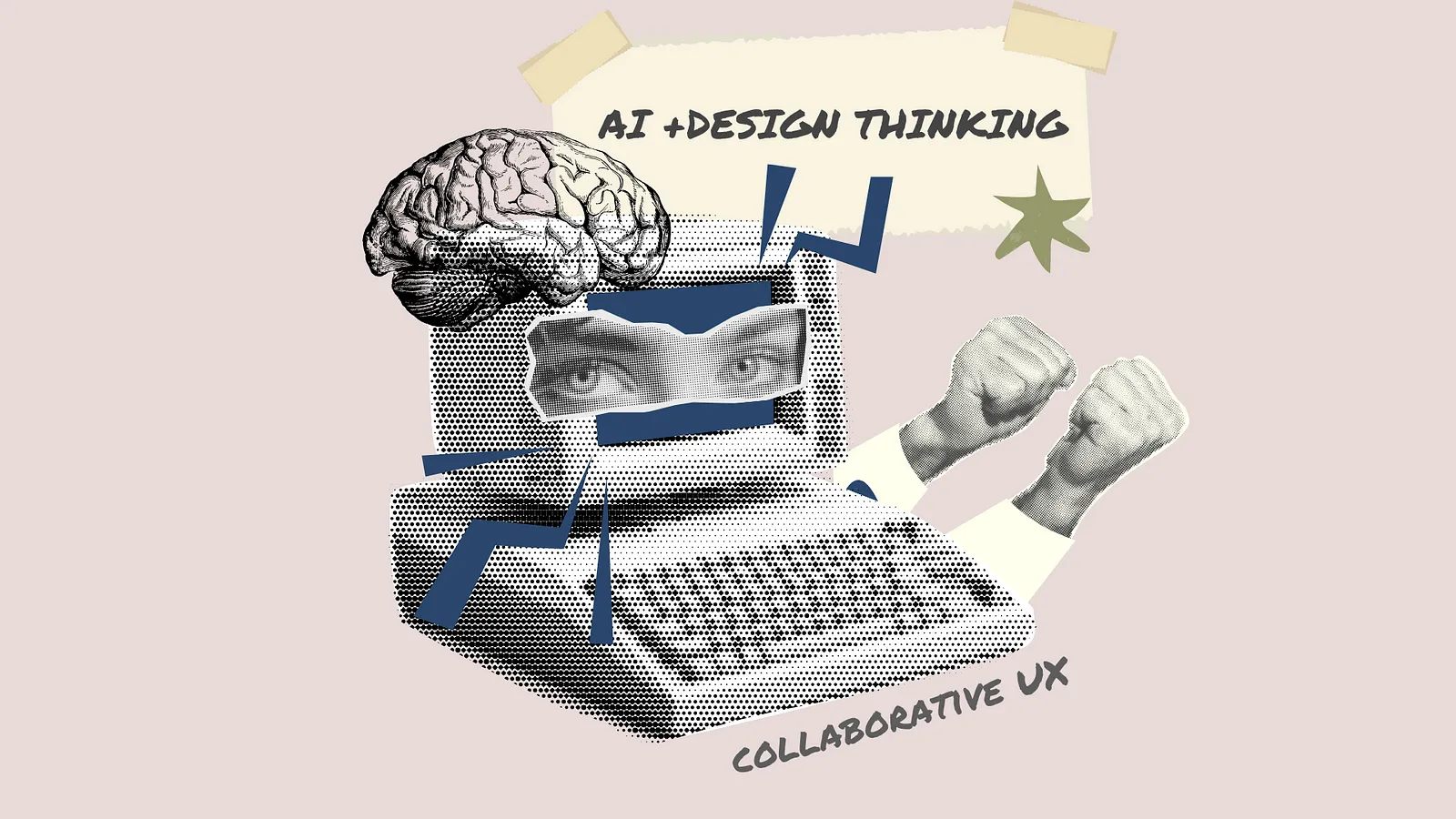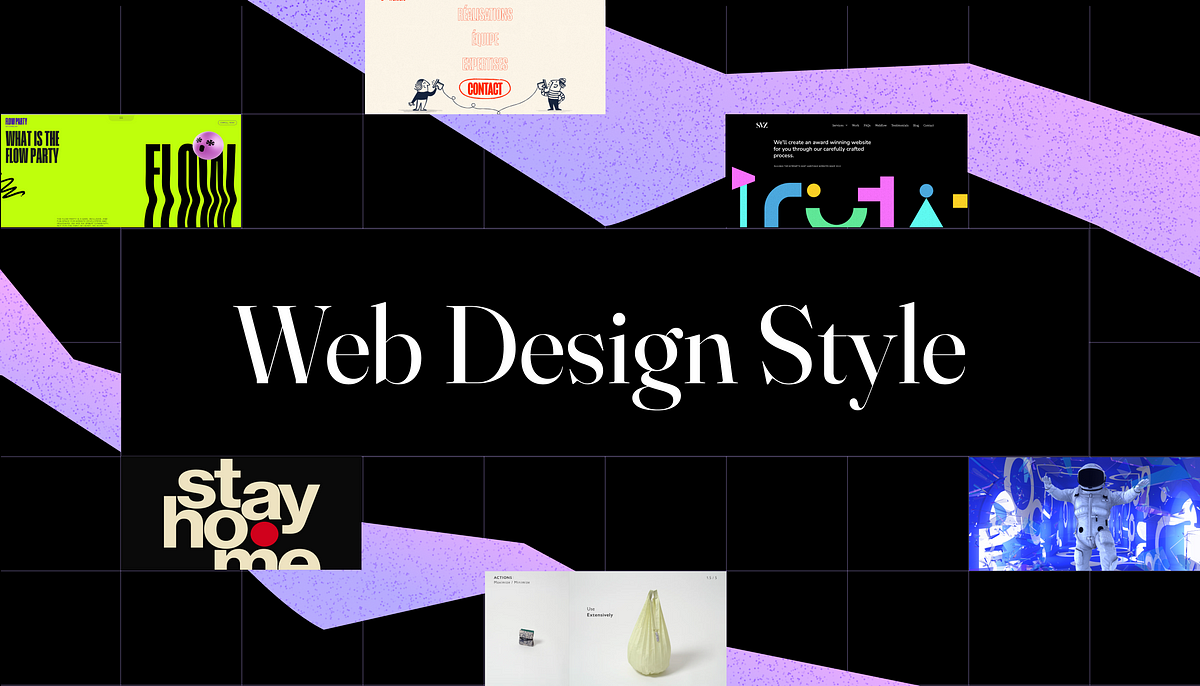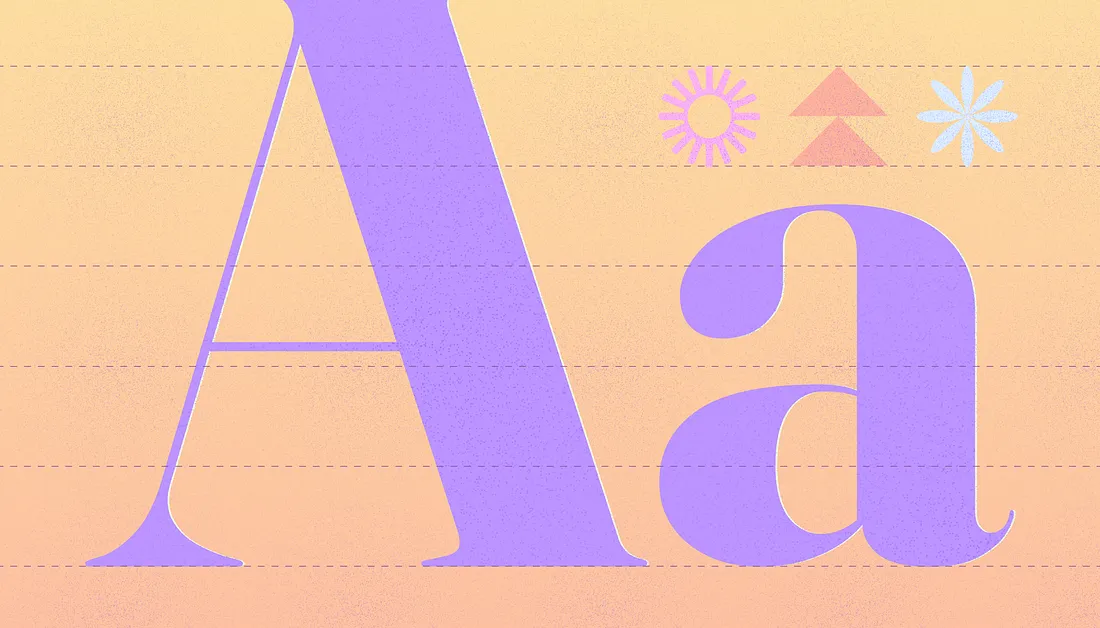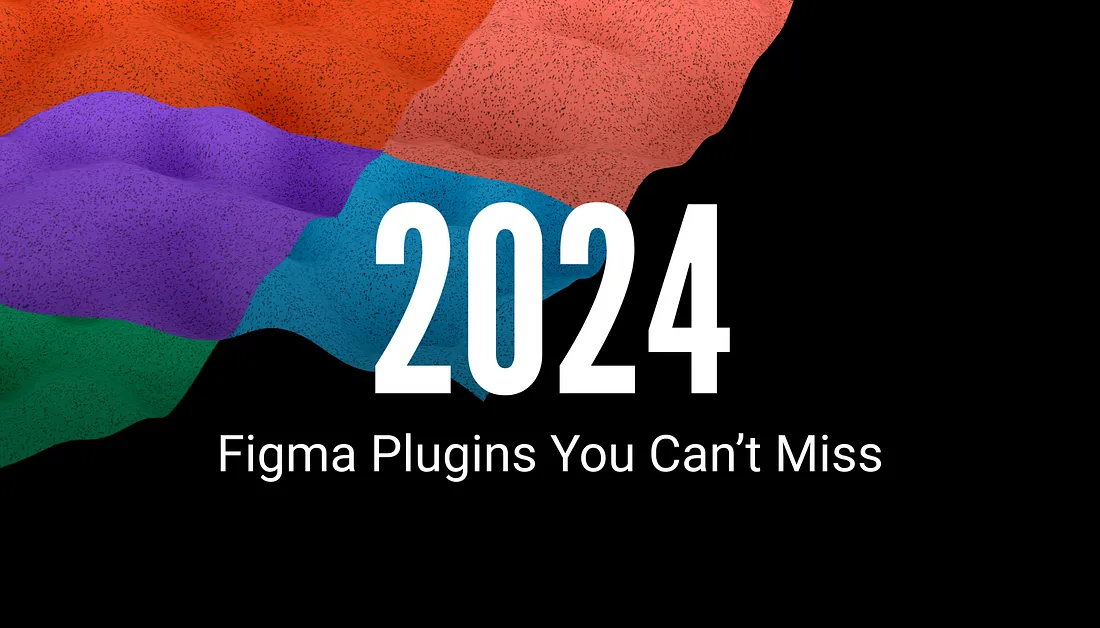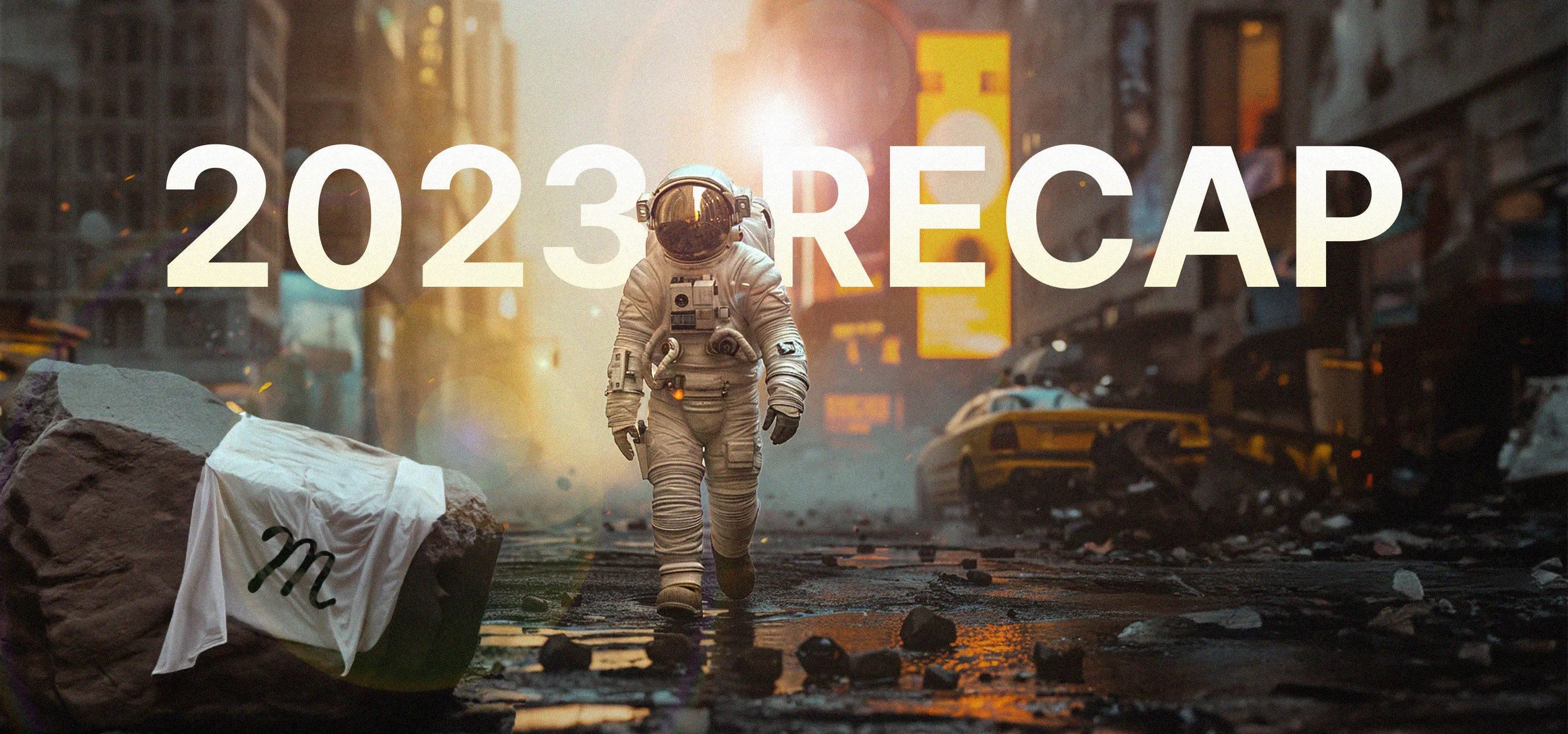![]() Article by Letitia Rohaise
Article by Letitia Rohaise
When searching for resources on UX and AI, I found it surprisingly difficult to find any writing beyond advice and software to make the design process more efficient. While efficiency tips are valuable — don’t get me wrong- my deeper interest lies in understanding how designing with and for AI systems will shape the very foundations of UX.
After doing some research and taking a very useful course pitched for developers and not designers: “UX for AI: Design Practices for AI Developers”, I wanted to share my findings, stripping away the jargon and technical terminology that often excludes designers from the conversation.
I’d like to point out that my insights are driven by curiosity, not expertise. Yet, what I do think is evident is that there is a growing need for designers to work more closely with AI engineers and AI itself. Such collaboration is key to keeping our products aligned with user needs, ensuring they continue to be both accessible and impactful.
Designing for uncertainty
Traditionally, UX design has been about creating predictable, reliable products, where specific actions lead to expected outcomes. A product should be consistent — this is a design principle that ensures that users can navigate products with expectations and ease. In the design process itself, we meticulously map out all possibilities in user flows (A-B) and prototypes to design products that are predefined.
However, AI introduces an element of unpredictability, challenging us to design for variable outcomes. With AI, particularly when dealing with sophisticated language models (like ChatGPT), the same input can lead to multiple outputs, and there are infinite inputs. John Maeda, VP of Design and AI at Microsoft, does a really good job of explaining this shift. So how do we design for the unpredictable?
In this new context, designers are tasked with embracing an adaptive design, one that responds to AI’s fluidity in the same way that responsive design responds to different screen sizes. This adaptation will mean dynamic interfaces that can intelligently respond to AI’s unpredictable outputs — probably using AI themselves. We will no longer be designing for fixed pathways but a landscape where user flows are fluid and outcomes unknown. This transition is paradoxical: As the role of AI grows, maintaining consistency in design becomes both increasingly critical and complex. We are challenged to redefine our strategies, ensuring that despite the unpredictability of AI, the principle of consistency remains at the heart of user-centred design.
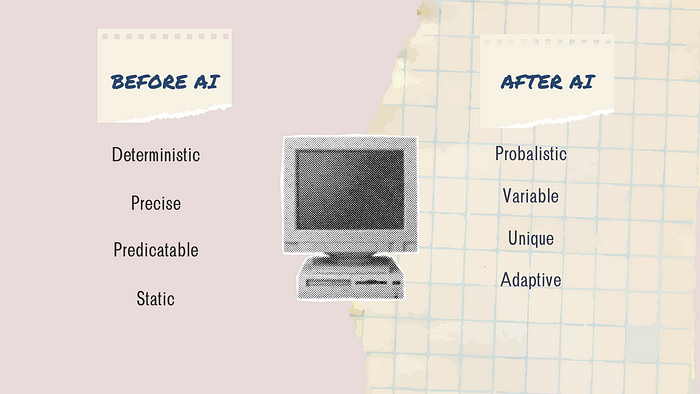 Image by Author, made on Canva. Based on a slide from UX for AI: Design Practices for AI Developers
Image by Author, made on Canva. Based on a slide from UX for AI: Design Practices for AI Developers
Redefining User Trust
Over the past three decades, the goal has been to establish absolute trust in technology; it has been a long game and in no way a smooth journey. However, AI has meant absolute trust might be counterproductive. The uncertainty and potential errors within AI systems, especially at the fringes of their capabilities, demands an “appropriate trust” (this is one of the modules in John Maeda’s course), an understanding that encourages users to maintain a critical perspective on AI’s abilities.
The current state of user trust in AI is diverse and complex. While some individuals readily integrate AI into their lives without hesitation, others approach it with caution or even fear. Achieving the delicate balance of healthy scepticism and recognition of its value is essential for developing “appropriate trust” and remains a significant challenge for designers.
In sociology, trust is based on the expectation that the trustee (the AI system) will act in a manner beneficial to the trustor (the user). Honesty and reliability form the bedrock of this relationship. Therefore, while reliability cannot be guaranteed (due to the unpredictability of AI), ensuring honesty is essential. Products need to be transparent, with their capabilities and limitations clearly laid out for everyone to see. Designers play a key role in delineating the boundaries of AI abilities and working to demystify AI to ensure this appropriate level of trust is met.
Introducing Thoughtful Friction
“Usability,” characterised by the ease with which tasks can be completed, remains a fundamental principle in UX design, where the reduction of friction is typically the overarching goal. However, when fostering “appropriate trust”, introducing deliberate friction can prompt users to reflect before taking actions, improving the precision and effectiveness of their outcomes. When usability is so seamless that users are not even aware of their actions they enter an “auto-pilot” mode, devoid of conscious decision-making. This is the time when you unknowingly commit to choices, agree to terms or share misinformation with your thousands of Instagram followers. Given AI’s capacity to further streamline tasks, it’s ever more important that we thoughtfully design friction into the user experience.
For some designers, introducing friction is not alien and has been a way to create an immersive experience, much like ‘The Ikea Effect’. The idea here is keeping the user more engaged. Although our primary aim might not be to create immersion per se, our objective aligns with it: to heighten user engagement, ensuring they are alert and can identify when AI does not meet expected standards. Appnova explores 5 simple ways friction can be a game-changer in design, from preventing bad decisions to giving user responsibility.
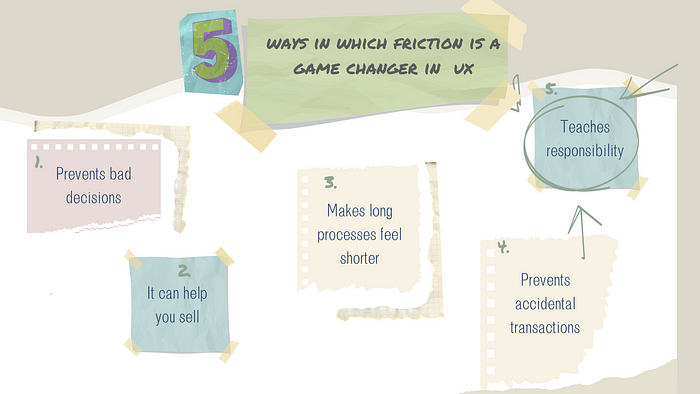 Image by Author, made on Canva. Based on “5 simple ways friction can be a game-changer in design”
Image by Author, made on Canva. Based on “5 simple ways friction can be a game-changer in design”
Some ways in which we can create friction for a more engaged experience include AI notices and prompts. Here, AI notices refer to the use of visual cues or contextual signals that indicate AI-generated content, prompting users to review AI outputs. This simple moment of reflection can have a big impact.
Striking a balance between seamless interactions and intentional friction is key for creating user experiences that are both intuitive and impactful. Monitoring this balance, gathering user feedback, and analysing time spent interacting with the product are important steps to iteratively refine, design and sustain this balance.
Usability Testing Reimagined
With AI’s inherent variability, usability testing can no longer follow task completion and assessment at key points in the design process. By using AI in the usability testing process, we are able to address the need for ongoing, adaptive testing that can be integrated into the product itself. This more continuous refinement, reflecting the principles of iterative, user-centred design, is what usability testing has always wanted to be.
Using AI in this testing phase allows us to take advantage of its analytical potential. Unlike traditional hands-on techniques in controlled environments, we are now able to use vast amounts of data across the product’s real lifetime. The improvement process can also be built into the model itself, improving the effectiveness and efficeny. “This transition not only accelerates the testing process but also provides more comprehensive insights because AI systems can analyse user interactions at levels of depth and at scales that are unattainable by human testers alone.” That being said, while we should undoubtedly use AI to help us test non-deterministic products, there is still a need for human involvement and strategy.
Beyond the Interface
Where does the future of UI sit within this? It seems like there may be a trend towards an interface-less design, influenced by not just AI but also the advancements in voice interaction. This presents a new challenge for designers — particularly for those who thrive on visual creativity (me!). With AI, it is likely that even less of the interface is needed because a single function can serve far more wide purposes. Or perhaps it doesn’t mean no interface, but the nature of the interface will dramatically change in favour of VR/AR — or perhaps brain-computed interfaces?! Alex Jewell gives a very interesting, if not a little scary, discussion on what the end of the interface will look like. He does suggest that there will still be a place for designers but it will be more strategic and less aesthetic. It almost seems paradoxical that as what’s going on under the hood is becoming more complex, what’s on the outside shrinks away.
The Future of Collaborative UX
Our discussion has only scratched the surface of how AI will change our design thinking. I am in no way an expert on this topic and in early stages of exploring AI and UX integration, but one opinion stands firm: UX needs to evolve into a more collaborative discipline. Microsoft coined the term ‘Collaborative UX’, where designers work more closely with AI engineers but also in collaboration with AI itself. We need to shift away from our siloed, compartmentalised workflows, where designers and developers have distinct roles and processes, towards a more unified, collaborative process. In this new model, designers are important at every stage of development. For instance, their involvement is critical in training the models and designing the system architecture, since these elements are fundamental in shaping the delivered user experience. Likewise, incorporating feedback mechanisms directly into products requires designer input to understand what data and feedback is needed to drive future product changes.
We need to start to also see AI as a co-creator — or perhaps better a co-pilot. We need to ensure that we are strategic in our use of these systems, prioritising design thinking and principles so that AI enhances rather than dictates the user experience. In this collaboration, there is the potential to design more responsive experiences that support rather than overshadow human creativity.
For us as designers, mastering AI is essential, recognising it as a core component of our design toolkit that enhances efficiency and precision. While AI transforms how we design, the user remains our core priority — and that, I believe, will never change.
More resources:
UX design in AI: A trustworthy face for the AI brain.
UX design: a new way of designing ft. ChatGPT and Midjourney
Revolutionising usability testing with machine learning
Also check out John Maeda’s youtube channel “Design & AI”
Linkedin learning course: “ UX for AI: Design Practices for AI Developers”
Article Written by Letitia Rohaise (letitiarohaise.co.uk). Product Designer with a Masters’ in Psychology. Letitia is an advocate for integrating cultural psychology into design, ensuring products are meaningful and accessible across diverse cultural contexts.
